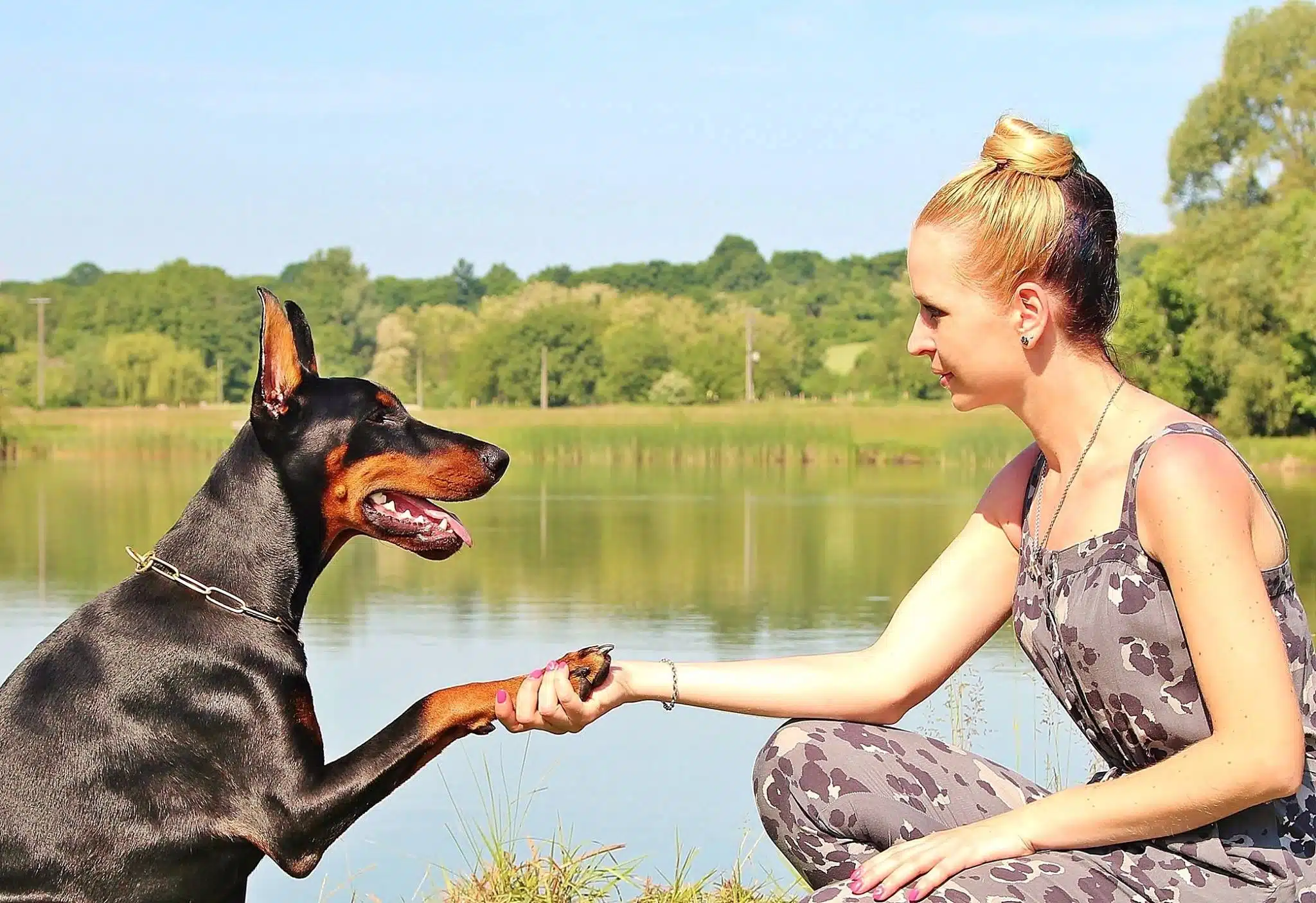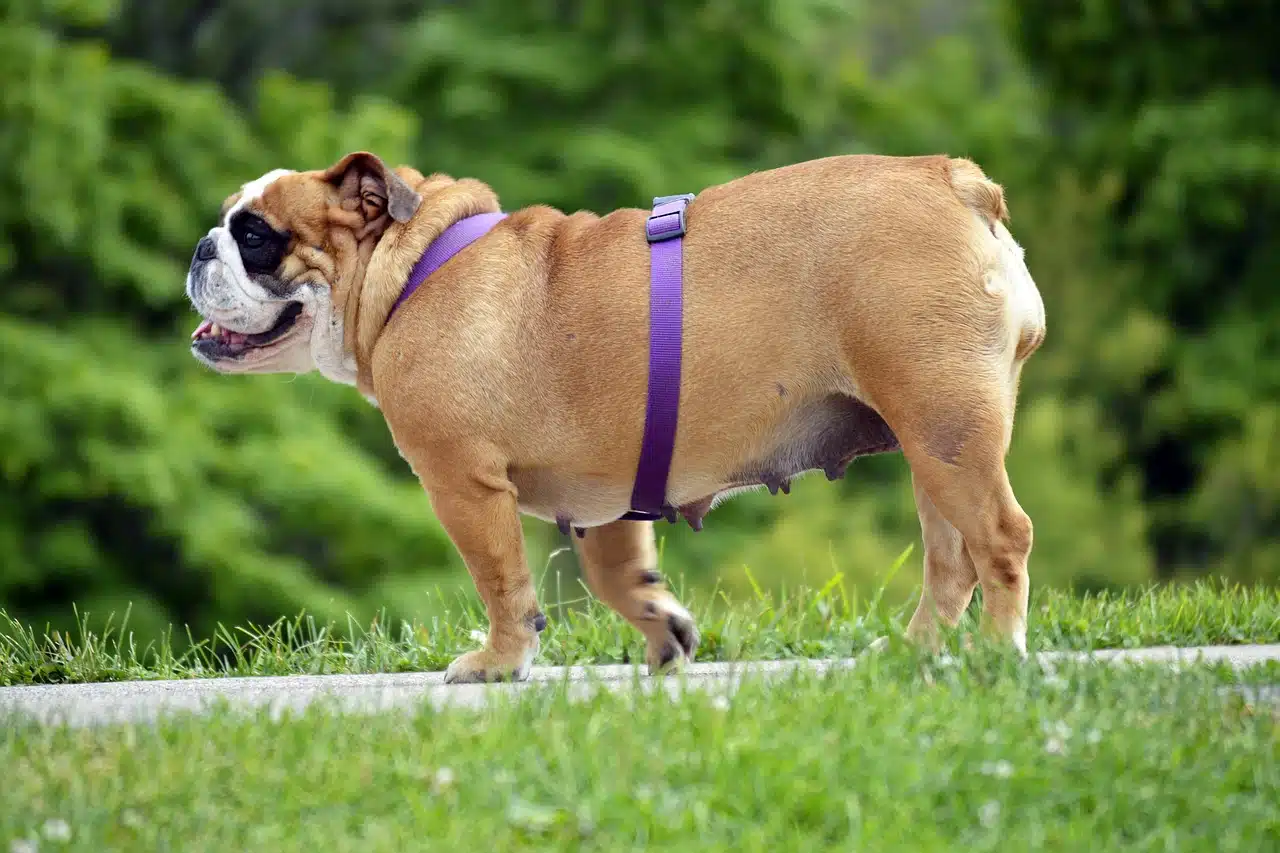Are you searching for suitable chew treats for your dog? In this article, we’ll explain why chew treats are important for your dog’s health, the types of chew treats available, and the qualities good chew treats should possess. Additionally, we’ll provide you with some examples of suitable, long-lasting chew treats.
Our Top Picks
[table id=18 cache_table_output=false /]
Our Dog and his Chewing Needs

The dog, as man’s best friend, is undoubtedly the most beloved pet, but one thing we must not forget: they are animals with an inherent hunting instinct and chewing needs. This trait has not completely disappeared to this day.
By the way: In addition to conventional dry food or fresh meat, as a dog owner, you should regularly provide chew treats for your beloved pet. Your dog will thank you with much love and joy.
For his Well-being

However, chew treats in various forms are important not only to fulfill the urge to chew but also for your dog’s well-being. With a good chew treat, you can keep them busy and ward off boredom.
Furthermore, chewing on treats also means dental care for your furry friend, as fibrous chew treats prevent the buildup of tartar, reducing the formation of dental plaque.
Starting from Puppyhood…

Even young puppies have a strong urge to chew. So, to prevent the young dog from nibbling on new and possibly expensive shoes, chew treats should be available in the house from as early as 12 weeks of age.
5 Important Facts
- Every dog, from a tiny Chihuahua to a powerful Rottweiler, has a chewing instinct.
- The dog sees its chew treat as prey and enjoys gnawing on it calmly.
- When purchasing a snack, you should definitely look for natural ingredients.
- There are various chew treats that contain artificial colors, attractants, chemical additives, or preservatives.
- These unnatural substances can, in the worst case, endanger the dog’s health.
REMEMBER: When looking for a suitable chew treat for your beloved four-legged friend, make sure to choose one with exclusively natural ingredients.
Which Chew Treat is Right for My Dog?
Chewing Fun for Puppies:

Young dogs quickly get bored; they want to be entertained and satisfy their natural urge to chew.
For young puppies from 12 weeks old with milk teeth, healthy chew snacks made from natural ingredients are especially suitable. When purchasing chew treats for your puppy, make sure they are made from fresh raw materials.
These treats are gentle on the still-sensitive stomach of the young animal. Bully sticks and beef chew pieces are particularly digestible for young dogs and promote the animal’s natural chewing drive.
By regularly offering high-quality chew treats to your puppy from the age of 12 weeks, you can facilitate the eruption of permanent teeth and promote the dental health of the puppy from an early age.
For Allergies:
Not every dog tolerates beef. Yet, most chew treats are made from this type of meat. For all allergy sufferers or dogs that prefer turkey, we have a secret tip: turkey necks.
For Active Dogs:

Active dogs love challenges and require special items to satisfy their natural chewing instincts. For demanding dogs, hard chew treats are suitable, stimulating saliva flow and guaranteeing long and enjoyable chewing experiences.
Water buffalo horns or beef bones are suitable chew treats that appeal to discerning dogs and meet the special needs of active animals.
For Overweight Dogs:

Many dogs face the same issues as humans. Too much food and too little exercise can lead to rapid weight gain in animals too. Here, a change in diet can help.
If your dog is on a diet, you must look for chew treats that are particularly low in calories. Healthy and low-calorie chew snacks include:
- Cod skin
- Buffalo strip pieces
These promise long and tasty chewing enjoyment with low calorie intake.
Chewing Pleasure for Seniors:

Older dogs often suffer from problems with teeth and gums. Here, chew treats are of enormous importance because regular chewing helps prevent cavities and tartar formation.
To avoid burdening the sensitive stomachs of older dogs, opt for low-protein snacks such as Torga root or antler sticks.
6 Chew Treats Compared

Chew Bones:
The classic among chew treats is made from beef hide and is generally well-received by all dogs. Especially for dogs that have no boundaries when it comes to eating and prefer to gulp everything down, the classic chew bone is a good way to learn and train the joy of chewing.
Thanks to its popular shape, your dog can equally exercise its jaw and paws by finding the best position for the chew bone.
The classic chew bone is rich in proteins and a healthy snack for dogs of medium age.
Chew Rolls:
Chew rolls, like the classic chew bone, are made from beef hide. They are particularly suitable for small dogs due to their size.
Even young dogs cope well with the delicate shape of this chew treat and can train their bite here. For larger dogs, this chew treat is suitable as a reward snack for in-between.
Pig Ears:
A delicacy for every dog. Dogs love the natural taste of these crispy treats.
Pig ears should only be given to dogs that enjoy chewing leisurely.
Due to the natural shape of the pig’s ear, the meat must be chewed thoroughly and swallowed in small pieces.
Dogs prone to gulping may choke on the slippery pieces of this treat. So, this delicacy is truly only a good snack for four-legged connoisseurs.
Bully Sticks:
The penis of a bull becomes particularly soft and elastic after the dry process. Thanks to its elasticity, this chew treat guarantees particularly long chewing pleasure.
Bully sticks are very protein-rich snacks and should only be consumed by completely healthy dogs. One bully stick per week is sufficient to avoid endangering your dog’s liver with excessive protein.
You can find more information in our comprehensive guide to bully sticks.
Beef Scalp:
Overweight dogs are welcome to indulge in beef scalp chew treats, as they are considered particularly low in fat and easily digestible.
Beef scalp treats are offered in various sizes, suitable for dogs of all ages and sizes. The scalp of the cow has a firm texture, ensuring a long chewing pleasure.
Tripe:
Also a true classic among chew treats. Dried beef tripe is a natural delicacy for dogs of all ages.
Tripe, as a chew treat, contains many natural and healthy nutrients from the cow that have a positive effect on the dog’s health.
Magnesium, potassium, zinc, and iron, as well as vitamins A, B, C, D, and E, are predominantly found in dried tripe, making it a delicious and easily digestible snack in every food bowl.
The only drawback of this animal delicacy: Tripe has an intense odor of its own, so this chew treat should preferably be fed outside the house if possible.
My Conclusion
Chew treats are important treats that satisfy your dog’s natural chewing instinct. Treats made from natural ingredients with a firm texture help your dog support its dental hygiene on its own.
Because regular chewing and exercising of the jaw counteract diseases of the oral cavity and teeth.
Chew treats like dried tripe can be a healthy snack thanks to its valuable ingredients, supporting the animal’s health with essential vitamins and trace elements.
Furthermore, a healthy chew treat reduces the boredom of the animal. Especially young dogs are prevented from nibbling on shoes, furniture, or similar items by natural chew treats.
Exotic Chew Treats
A dog loves varied food. So, you can buy chew treats made from exotic ingredients like kangaroo or ostrich meat on the internet.
Sheep’s ears are also becoming increasingly popular, offering the dog a good taste alternative to the classic pig ears.
Alternative to Animal Chew Treats
If, for various reasons, you do not want to offer your dog a chew treat made from animal products, you must consider one thing. Your dog needs sufficient opportunity to satisfy its natural chewing instinct.
As an alternative to animal chew treats, a solid piece of wood that the dog can then chew with its teeth is also suitable. A carrot now and then is also a great idea.
Hard vegetables are gentle on the dog’s stomach and can be chewed on as a healthy alternative to animal chewing treats without hesitation.


